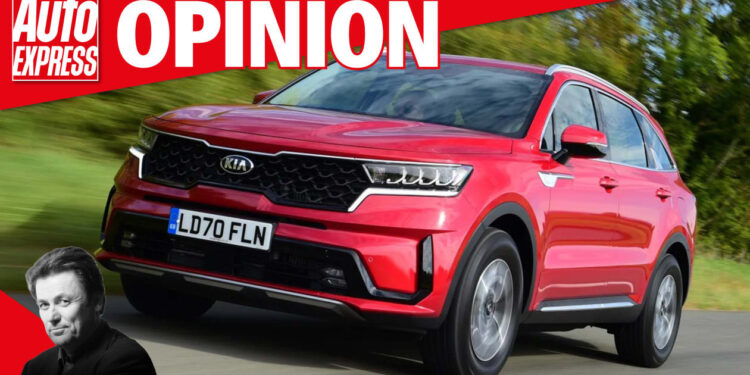It’s make your mind up time for mainstream motor manufacturers. To price motorists out of their brand-new cars, or to price them in? That is the question. And what follows goes some way towards providing the answer.
Ten years ago I argued that consumers “had never had it so good” and, to illustrate the point, raved about the just-launched Mk7 Golf, which I claimed was “priced right” (from £16,330). Today, the bottom-of-the-range Mk8 version (not as good as its predecessor) is £25,610. The most affordable Polo then was £10,420 – today it’s £19,030. The bog standard up! was £8k. It’s £14k now. These price hikes of up to 82 per cent over a period of 120 months are bad – but not the worst.
The cheapest Kia Sorento in 2012 was under £20,000. Today it sits in £40,000-plus territory. And you don’t need a calculator to work out that this represents a hefty price increase in excess of 100 per cent (well above inflation) – which may explain why we see so few brand-new Sorentos on the road. Shame. It’s a fine car, priced inappropriately.
The largest manufacturer in Britain, ahead of Nissan, MINI and Toyota, is JLR, which traditionally churns out hundreds of thousands of vehicles a year, some of them commercial 4X4s for construction sites, farms and the like. Despite this, it’s attempting to transform itself into a “luxury” firm. This, in turn, now means a growing number of models are priced way beyond £100,000. That’ll be nearer £200,00 when they roll off the production lines as pure EVs in the mid-2020s. Even today the (non-EV) entry-level Range Rover Sport wears an £80,000-plus (ouch!) price tag. Ten years ago, the equivalent model could be had for less than £50k.
While these and other companies are in danger of alienating once-loyal buyers (never mind potential new customers), who just can’t afford cars whose prices have lately gone through the roof, a variety of other firms are moving in the opposite direction by being less greedy, going easier on the wallets of the consumers they live or die by.
Porsche, for example, charged £39,207 for its entry-level Cayman in 2012. The equivalent car today is £47,700 – representing a rise of just 22 per cent over the decade. More than reasonable, no? Of the newer-to-the-scene cars, the £25,995 MG4 EV is surely one of the showroom bargains of 2022, along with the Dacia Jogger seven-seater starting at £16,645, with a £20k-ish hybrid version imminent. At £20,999, the Suzuki Vitara hybrid looks like an absolute steal, too. Same goes for the more upmarket Fisker Ocean, born this week and priced at £34,990, which is sensible for a car of this (expected) calibre. At the same time, if the Renault 4 could be reborn as an EV at £20k (though it may well be more), that would prove the firm’s commitment to value for money.
Like I said, manufacturers need to decide whether to price customers into – or out of – their models. On the above evidence, Porsche, MG, Dacia, Suzuki, Fisker and Renault are doing their best to ensure the price is right. Kia, VW and JLR I’m not so sure about.
Do you agree with Mike? Do cars cost too much? Let us know your thoughts in the comments section…


